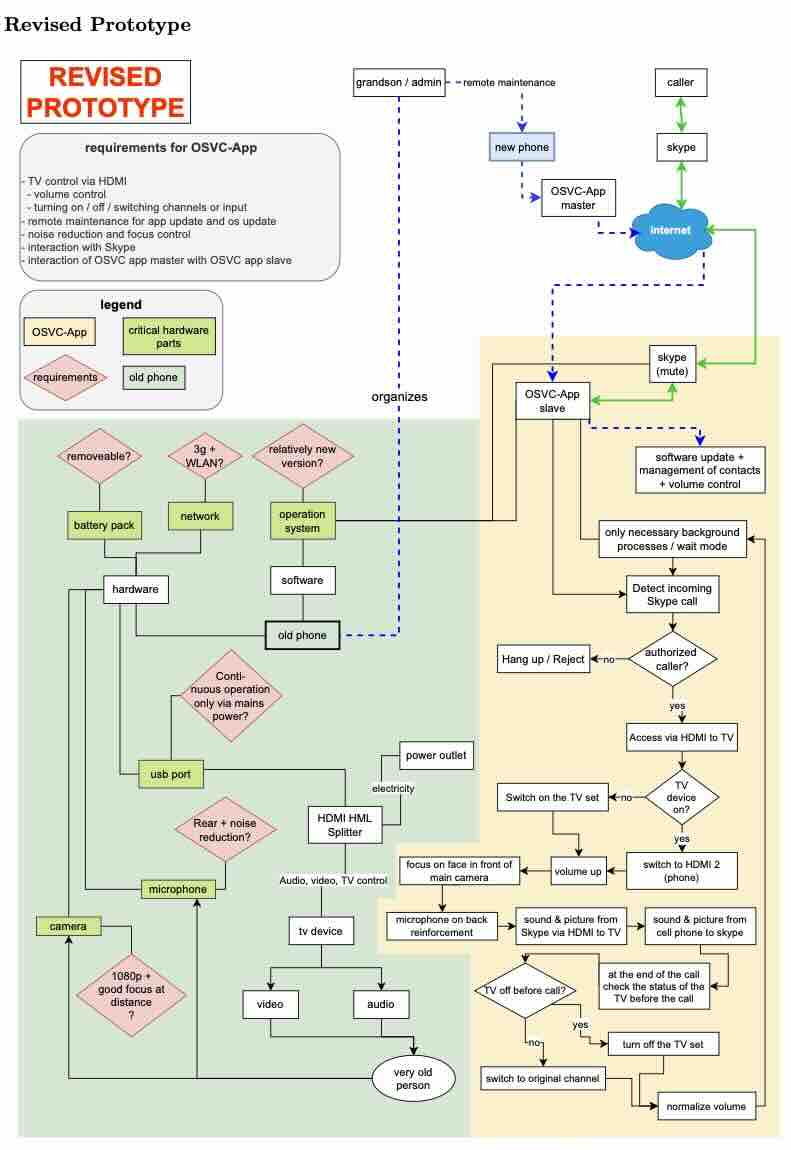Objectives
Development of a prototype for the simplest video telephony for seniors with a budget (purchase price) of less than EUR 100.
Abstract
Many old people experience serious health problems from loneliness and isolation. Due to immobility and a lack of technical sophistication, they often only have the landline telephone. Although video calling solutions for seniors already exist, very few of those in need use them. The goal of this design thinking micro cycle, which was reduced to a processing time of just a few days, was to gain a better understanding of the assumed problem, generate ideas for its solution, and test its critical functions through a prototype. After confirming the existence of the problem and its significant scope, a combination of an old cell phone, a special TV mount and an app for interacting with the TV and Skype etc. turned out to be the best idea. The prototypes, low res flowchart on a functional level, addressed to a future helper (e.g. a caregiver) and a software developer brought the following results: There probably won’t be any problems setting up the selected solution, but the budget of EUR 99 would have to be exceeded. A revised but not yet tested prototype should answer the following questions: What are the critical functions of the app, and what are the critical hardware requirements?
(This document is based on several papers written as part of the last module (capstone) of the MicroMaster Program in Design Thinking from the Rochester Institute of Technology (RITx @ edX). I have corrected them based on feedback from my lecturers, merged them and included them in my portfolio brought into a nicer form with Overleaf. The pure working time was about 35 hours in total. A permission to publish my capstone project is available in written form.)
Results
 Fig. 1: Revised Prototyp
Fig. 1: Revised Prototyp